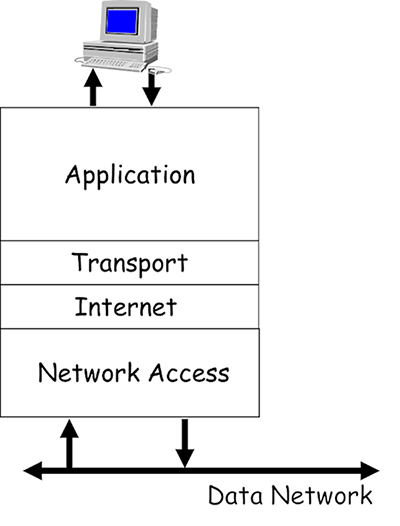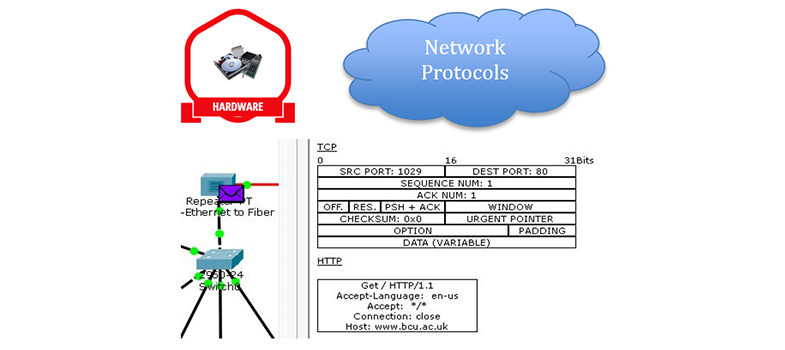2 TCP/IP reference model
- The protocols used within the Internet were designed using a layered model referred to as the TCP/IP reference model:

Figure 1
- These protocols operate on your computing devices, and allow the programs you use to access the data network via the single network interface card (NIC) that is fitted to most devices. Imagine how difficult this task would be for your device if you used multiple programs that required network access – for example, surfing the World Wide Web (WWW), downloading a file and sending an email.
- All these different programs expect to be able to simultaneously access your NIC in order to send and receive data. The purpose of the TCP/IP reference model is to allow the design and creation of protocols that can support the network requirements of various installed programs competing for the attention of a single NIC.
- Each layer of the model defines the function of the protocols that operate within it:
- Application: provides the interface between the other layers and the operating system software on your computing device.
- Transport: manages application layer data and prepares it for transmission by segmenting it into easily manageable blocks. It is also responsible for allowing multiple programs to simultaneously access the NIC, and managing the reliable delivery of data if required.
- Internet: manages the delivery of data encapsulated in packets across networks.
- Network access: manages the delivery of data across local network media, regardless of the physical media type.
- Groups of protocols that are created in accordance with a protocol model are referred to as a protocol suite. The TCP/IP protocol suite operates in accordance with the TCP/IP reference model, and it is the predominant suite used within the Internet.
Back to previous pagePrevious
1 Layered network protocols
